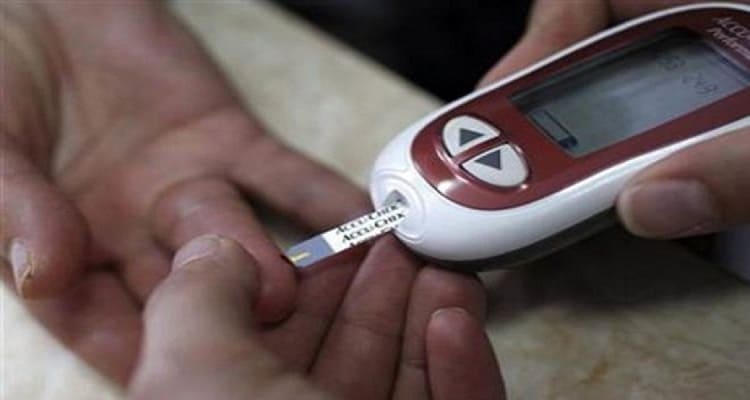Continuous glucose monitoring offers real-time insights and powerful metrics like Time in Range (TIR) to help people improve their glucose control and lower the risk of complications
Diabetes is a growing health concern around the world. One in 11 adults in Southeast Asia are living with this chronic lifestyle disease[1], with more than 100 million people in India alone. [2] A recently published pan-India consensus paper shows that time-in-range (TIR) data generated from continuous glucose monitoring devices is a powerful metric that people living with diabetes can use to gain a better picture of their glycemic control and make more informed decisions. TIR is the percentage of time a person’s glucose values are within the recommend target range and is effective in capturing dynamic variations in glucose levels.
Diabetes is a chronic, metabolic disease that causes elevated levels of blood glucose (or blood sugar). Over time, this can impact the heart, blood vessels, eyes, kidneys, and nerves. According to a Lancet study, nearly 30 per cent of type 2 diabetes patients had three or more comorbidities at diagnosis, which increased to 60 per cent of patients ten years later. Thus, it is imperative that the condition be managed effectively. Regular glucose monitoring, focus on diet with proper nutrition and exercise play an integral part in managing the condition. This can lower the risk of diabetes-related complications.
Today, there are new monitoring technologies available to more people living with diabetes than ever before. With the advent of continuous glucose monitoring (CGM) devices, people can see their whether their glucose levels are trending up or down, and trends thus make informed decisions about their food and exercise. Apart from the relief of not having to undergo multiple finger pricks, CGM devices can also help determine the control a person has over their diabetes. By looking at the percentage of time one spends in ‘time in range (TIR), between 70 mg/dL and 180 mg/dL, often known as the sweet spot, one can understand how diet, food and medications impact glucose control. Generally, the target window to be in range is about 17 hours each day, or 70 percent.
Dr Prashanth Subramanian, Head of Medical Affairs, Emerging Asia & India, Abbott Diabetes Care says, “With life-changing technology and innovation, diabetes care has evolved greatly. Continuous glucose monitoring devices can advance diabetes management in India, empowering people with glucose readings, offering unique insights with metrics like Time in Range. This can make people aware of trends promptly guiding them to take lifestyle or treatment decisions to be in better control of their glucose levels.”
Diabetes management is a daily responsibility for people with the condition and their caretakers. CGM devices offer many benefits, including continuous data and trends allowing them and their physicians to take important decisions. With metrics like TIR, they also help go beyond traditionally employed glucose metrics like glycated haemoglobin (HbA1c), offering a new gold-standard metric for diabetes management. While HbA1c only captures one’s average blood sugar levels over three months, through TIR, a person with diabetes can see highs (hyperglycemia) and lows (hypoglycemia) offering more personalized and comprehensive data.
Dr A S Lata, Senior Endocrinologist at Diabetologist, Sitaram Bhartia Institute of Science and Research, Delhi said, “With India being home to the second largest diabetes population worldwide, it is important to understand how people with diabetes can use available tools to understand their condition and better manage it. There are options like continuous glucose monitoring that help promote better management. Such solutions are important as they help more people improve their glycemic control with personalised and actionable information so they can lead a better quality of life.”
Experts highlighted that by maintaining time in range, people with diabetes can minimize the risk of various complications associated with the condition. The consensus study highlighted how people with diabetes with a TIR of more than 80 per cent have a significantly lower risk of wound infection and spend less time in ICUs. Additionally, even a 10 per cent reduction in TIR can increase the risk of diabetes-related eye diseases (retinopathy) by 64 per cent and increase the level of the albumin protein in one’s urine (microalbuminuria) by 40 per cent, which may indicate kidney disease.[3]
Additionally, the study highlights how fulfilling TIR targets can support diabetes care for various patient profiles. Knowledge of one’s TIR can be especially useful for people with diabetes belonging to special populations, like pregnant women, the elderly, high-risk individuals, and paediatric and adolescent populations. It can enable more informed decision-making in terms of treatment, diet, and physical activity, supporting both doctors and people with diabetes.
Technology-led innovations are taking diabetes management to the next level, helping more people with diabetes improve their health and live easier, fuller lives.
[2] Metabolic non-communicable disease health report of India: the ICMR-INDIAB national cross-sectional study (ICMR-INDIAB-17)
[3] Expert Consensus Recommendations on Time in Range for Monitoring Glucose Levels in People with Diabetes: An Indian Perspective | SpringerLink
- Advertisement -


